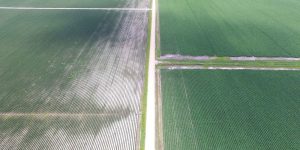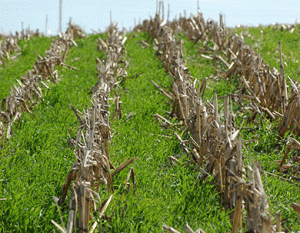Three new Xtend-dicamba related items have been posted recently on Hygeia. Collectively they frame what is to come as farmers and herbicide applicators begin the 2019 herbicide spray season.
In a fact-filled piece in DTN, Emily Unglesbee traces the march of glyphosate-resistant Palmer amaranth across the southeast, and then to the north and west. This is one of the nastiest weeds ever, and it’s tenacity is one of the drivers of farmer demand for new weed-control options like the dicamba-resistant crops available today.
And now, Palmer amaranth has spread essentially nationwide. Our take on Unglesbee’s important story is entitled “DTN and ‘Progressive Farmer’ Take a Closer Look at Monster Palmer Amaranth.”
On NPR, Dan Charles raises the question “Is Fear Driving Sales of Monsanto’s Dicamba-Proof Soybeans?” The farmers interviewed for Dan’s piece provide the answer, loud and clear (“yes”).
Our summary of this NPR reporting helps explain how Monsanto, BASF, and Corteva Agriscience have drawn farmers onto a herbicide treadmill that is now essentially out of control. Overall herbicide use, and especially the vast acreages sprayed with dicamba and 2,4-D, will make 2019 one of the worst years ever for serious and costly herbicide-triggered crop/tree/vine damage in the Midwest.
We have also posted comments delivered recently to the Arkansas Plant Board by Steve Smith, the chairman of the Save Our Crops Coalition and R+D Director at Red Gold (a major Midwestern tomato processor). Steve praises the Arkansas Plant Board for the tight restrictions it imposed in 2018 on dicamba use in the State, and lays out why he fears it will be a big mistake to relax the restrictions, as called for by the companies and many farmers.
Bad News Rising

With so many problems impacting farmers and rural communities, it is understandable that the adverse impacts and bad regulatory decisions surrounding Xtend technology and dicamba herbicide use have registered barely a blip on the Richter scale.
This may change in 2019 for four reasons.
First, the worst damage from dicamba drift won’t occur in soybean fields, because the majority of them will be planted to Xtend, dicamba-resistant seed.
Instead, the big increase in dicamba use will markedly enhance movement across landscapes, and essentially all broadleaf plants will pay a price. Dicamba damage will be found on farms, in rural neighborhoods, in parks and public spaces, and in all wild places, especially in regions in which a high percent of cropland acres are planted to dicamba-resistant or 2,4-D-resistant crops.

Many specialty crop growers will be hammered. Many backyard gardens and front-yard rose bushes will take a hit, as will numerous species of trees, vines, and shrubs.
Second, economics. Farmers are struggling with low commodity prices and rising production costs. About one-third of the corn and soybean crop in 2018 cost more to produce than it earned in the market. The cash cost of GE-Xtend soybean seed plus herbicides has risen more sharply than any other important agricultural input, with no end in sight.
Third, farmers don’t like being backed into corners. The companies control farmer-choice over GE seeds, because they decide the year before what traits to put in various seed varieties. For crop season 2019, soybean seed choices are more narrow, more expensive, and less effective.
In 2019, Xtend technology and newly introduced 2,4-D resistant soybeans will be in heavy demand. This “market signal” will lead the companies to expand further — likely to around 85% — the percent of soybean seeds for sale in crop year 2020 with the dicamba-resistance or 2,4-D resistance trait.
Soon, the companies will be marketing soybeans with both resistance traits, since dicamba-resistant soybeans can still be damaged by 2,4-D drift, and vice versa.
And so, instead of just driving farmer costs upward by accelerating the pace of the herbicide treadmill, the new secret sauce driving seed-biotech-pesticide company profits will be dual treadmills, one pushing herbicide costs up and the other driving seed prices higher.
Farmers don’t like being pushed into a corner, especially if once there, someone else drives what they can do on their farm.

Hopefully, a fourth change will gain traction in 2019 — rejection in the farm community of industry’s “blame the farmer/applicator” reaction when anything goes wrong with a dicamba application.
It is striking that Monsanto/Bayer and the other companies have been so persistent and unwavering in their assertions that any drift-crop damage problems with the technology must be the fault of applicators and farmers who have not followed the label instructions and other guidance from the companies.
This is the farm-sector change that has real potential to occur on a large scale. It is the change needed for there to be a realistic chance of shifting Midwestern weed-management systems toward more integrated, multi-tactic systems (here is an example of a proposed big shift in weed management for the U.K.).
To this day, a majority of corn and soybean farmers feel that the seed-biotech-pesticide companies are generally looking out for them, and are investing unselfishly in R+D that will give growers more effective tools that will also expand their profit margins.
But this “modern agriculture,” happy-face story is getting harder and harder to square with the sharply upward trend in weed management expenditures, coupled with serious cash flow problems and declining or absent profit margins on many row crop farms.
Perhaps farmers, and the co-ops and custom operators trying to use this technology responsibly, will brush off and live with this insult from the companies, or maybe they won’t.
Developing technology that forces farmers to buy costly, herbicide-resistant seeds simply to protect their crops from herbicides “blowing in the wind” may look today like a brilliant and effective short-term marketing strategy. But it may also speed up the reckoning needed among farmers, in order for them to accept the need to change in the direction of weed management systems.
And the sooner the better, according to essentially all the university weed management specialists working in the impacted states.
See the trio of new dicamba stories here:

